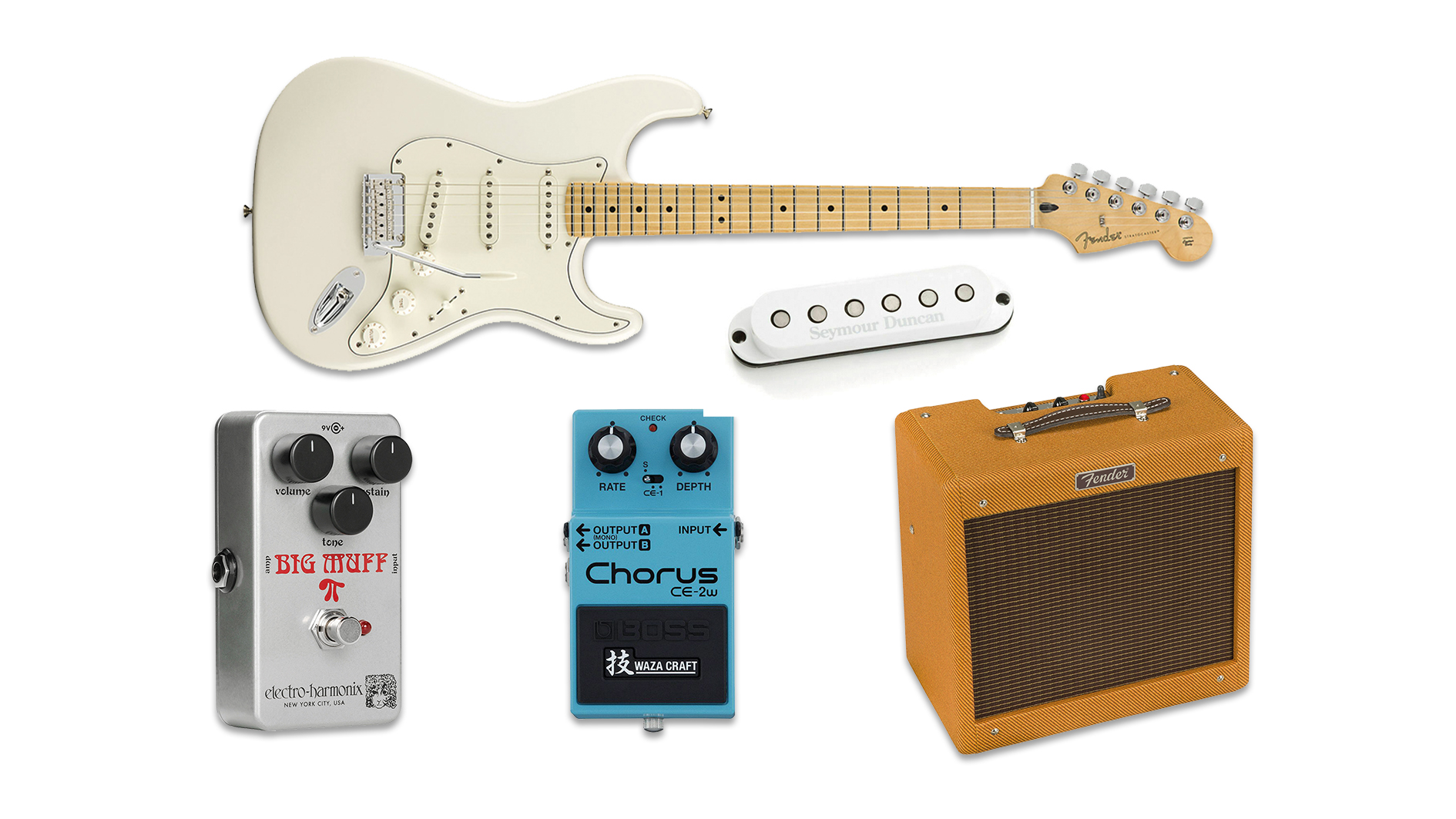The secrets behind David Gilmour's tone on Pink Floyd's Comfortably Numb
Here's how the prog legend achieved his sound on one of the group's most enduring hits

Best of 2020: One of the standout tracks from Pink Floyd’s ambitious concept album The Wall, Comfortably Numb has an enduring status as a timeless classic, thanks to David Gilmour’s dazzling, emotional guitar work, which has consistently earned top honors in “best guitar solo” polls over the last few decades.
Gilmour’s performance on the song’s two solos are master classes in phrasing and tone, showing how something that seems simple on the surface can actually be quite sophisticated and complex when one analyzes the finer essential details.
While the solos are the main focal guitar parts of the song (and hence this article as well), acoustic and pedal steel guitar tracks also contribute notable roles.
Gilmour played a ZB SS10 10-string pedal steel processed with a long, repeating delay and reverb for the intro and first verse, and an Ovation Custom Legend 1619-4 with modified “Nashville” tuning (with a high E replacing the low E and octave-up A, D and G strings replacing the regular A, D and G) provides the acoustic guitar rhythm track on the choruses and remaining verses after the first.
For the solos, Gilmour played his iconic black 1969 Fender Strat into an amp setup that was essentially a smaller version of his stage performance rig, consisting of a 100-watt Hiwatt half stack and a Yamaha RA-200 revolving speaker system, with the Hiwatt and Yamaha run in parallel.
The Strat and Hiwatt head had custom modifications that shape much of the distinctive tonal character of both solos.
The Strat’s DiMarzio FS-1 bridge pickup provided hotter output than stock Strat pickups, and a separate toggle switch that engages the neck pickup allowed Gilmour to use the bridge and neck pickup together for the first solo for added body and sustain.
Get The Pick Newsletter
All the latest guitar news, interviews, lessons, reviews, deals and more, direct to your inbox!
Gilmour’s Hiwatts also have custom linked inputs that combine the Normal and Brilliant channels in parallel, similar to jumping the channel inputs on a four-input model or using a Y-cable.
The Yamaha rotating speaker cabinet provides subtle modulation and also adds body to the throaty midrange tones produced by the Electro-Harmonix Big Muff Pi [fuzz pedal].
The key to Gilmour’s smooth, singing sustain is to provide a strong signal up front (courtesy of the hot FS-1 pickup and MXR Dyna Comp [compressor]) while also stacking gain via the Big Muff and Hiwatt, each set to moderate volume levels that combine into something bigger than the sum of their individual parts.
Automatic double tracking, distant room miking and a subtle hint of long delay added during mixing polish the final performance with ethereal ambience.
Get the sound, cheap!

- Fender Player Stratocaster
- Seymour Duncan SSL-5 bridge pickup
- Fender Pro Junior IV
- Electro-Harmonix Ram’s Head Big Muff Pi
- Boss CE-2W
TONE TIP: Use the Boss CE-2W set in Standard mode with slow Rate and 50% Depth settings to emulate the Yamaha rotating speaker cabinet modulation.
David Gilmour's original gear
GUITAR: 1969 Fender Stratocaster (alder body) with late-'70s Charvel birdseye maple neck, DiMarzio FS-1 single-coil pickup (bridge), two 1971 Fender Stratocaster single-coil pickups (middle and neck) and custom neck pickup engage switch (bridge and neck pickup setting first solo, bridge pickup only second solo/outro), Volume: 10, Middle Pickup Tone: 10, Neck Tone: 10
AMP: circa 1973-74 custom Hiwatt DR103 100-watt head modified with linked channel input (Linked input, Normal Volume: 7, Brilliant Volume: 4.5, Bass: 6, Treble: 5, Middle: 4, Presence: 6, Master Volume: 5) with WEM Super Starfinder 200 4x12 cabinet with Fane Crescendo 12A speakers, Alembic F-2B preamp (Input 1, Bright: On, Volume: 3, Bass: 4, Middle: 4, Treble: 5) with Yamaha RA-200 revolving speaker cabinet (internal preamp/amp bypassed)
EFFECTS: MXR Dyna Comp (Output: 7, Sensitivity: 4), c. 1974 Electro-Harmonix Big Muff Pi (Volume: 4, Tone: 6, Sustain: 6)
STRINGS/TUNING: Gibson Sonomatic .010, .012, .016, .025, .034, .044/Standard
PICK: Herco Flex 75 heavy nylon
Chris is the co-author of Eruption - Conversations with Eddie Van Halen. He is a 40-year music industry veteran who started at Boardwalk Entertainment (Joan Jett, Night Ranger) and Roland US before becoming a guitar journalist in 1991. He has interviewed more than 600 artists, written more than 1,400 product reviews and contributed to Jeff Beck’s Beck 01: Hot Rods and Rock & Roll and Eric Clapton’s Six String Stories.
“I just learned them from the records. I don’t read tabs or anything, I don’t read music – I learned by ear”: How a teenage Muireann Bradley put a cover of Blind Blake’s Police Dog Blues on YouTube and became a standard bearer for country blues
“The Strat was about as ‘out’ as you could get. If you didn’t have a Floyd Rose, it was like, ‘what are you doing?’”: In the eye of the Superstrat hurricane, Yngwie Malmsteen stayed true to the original












